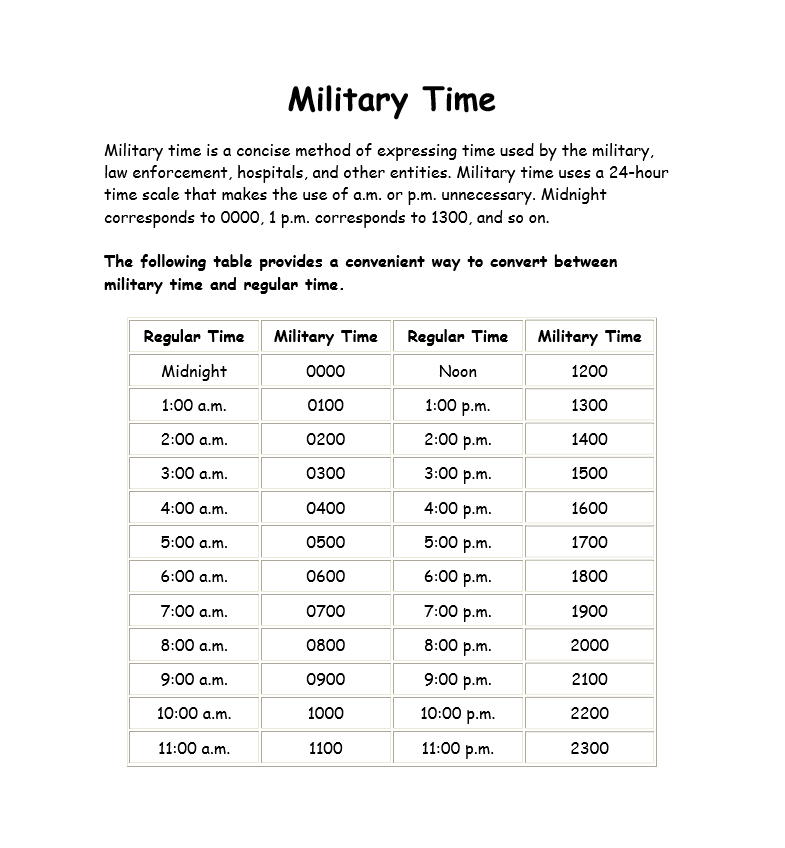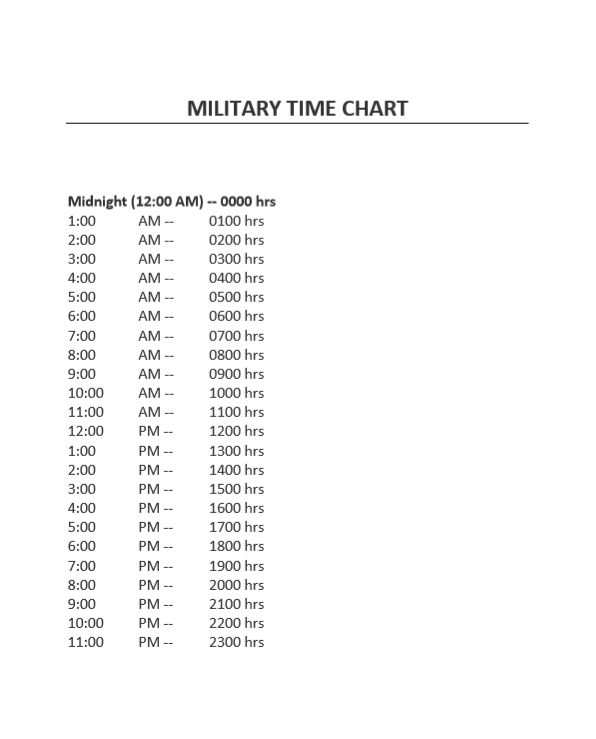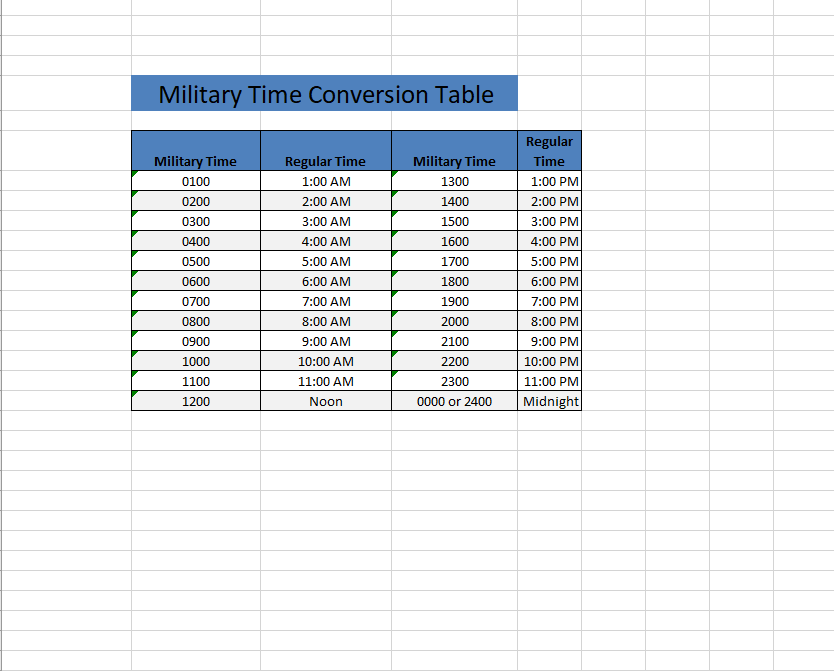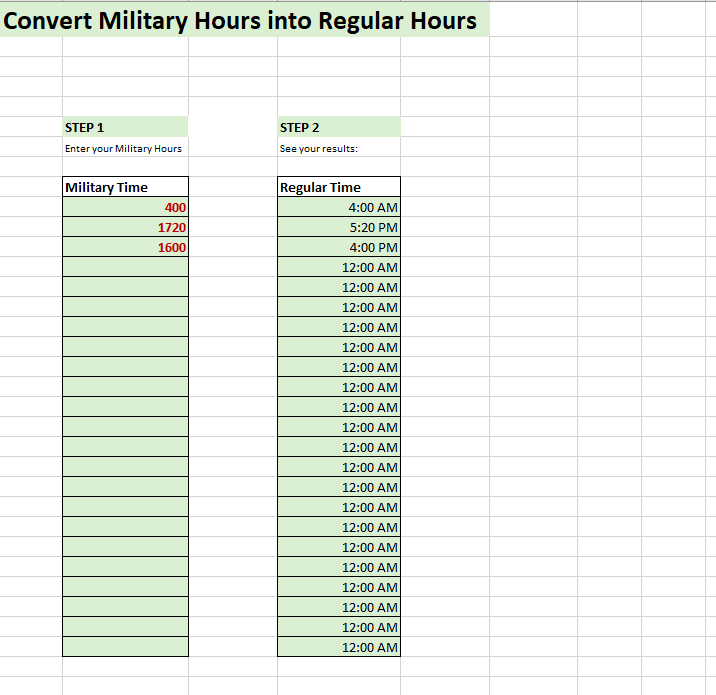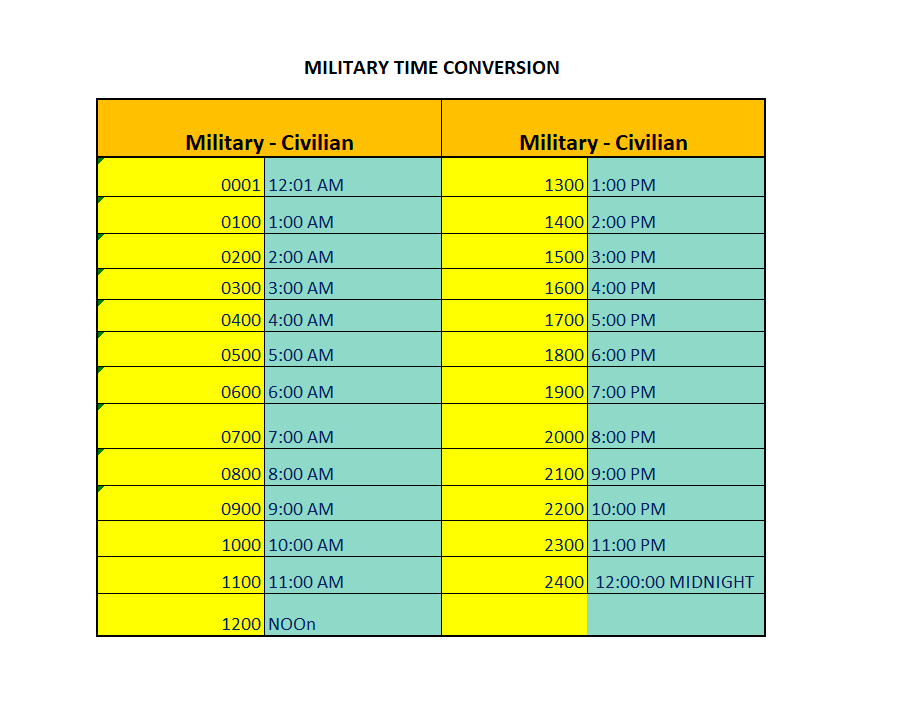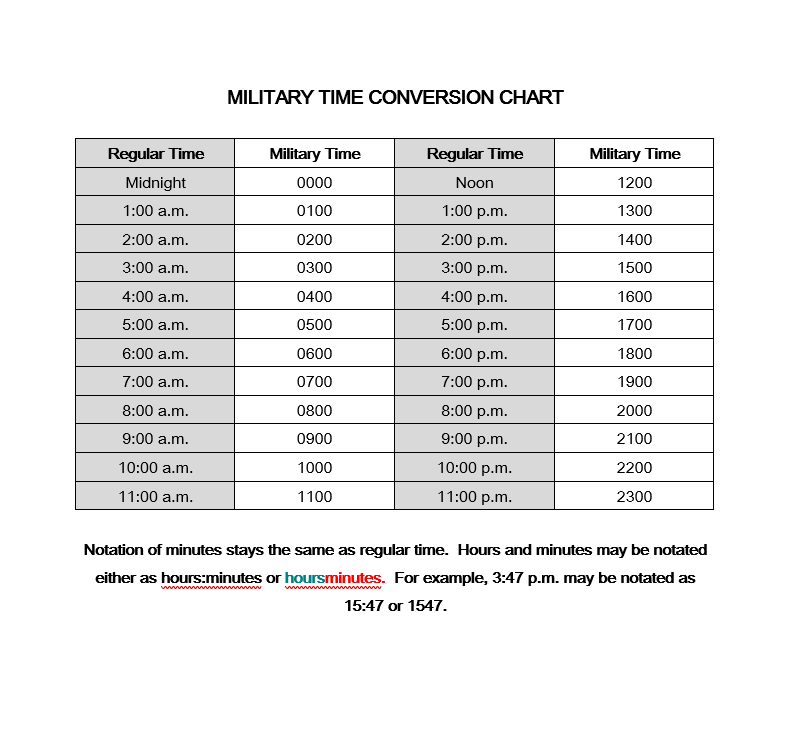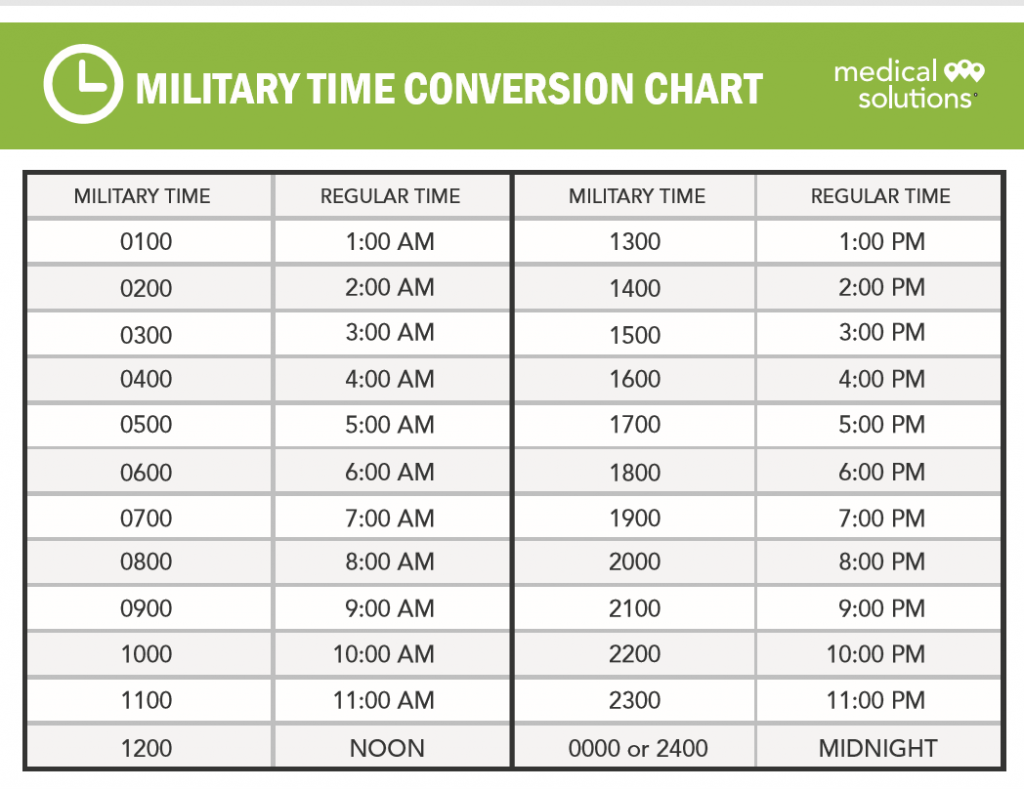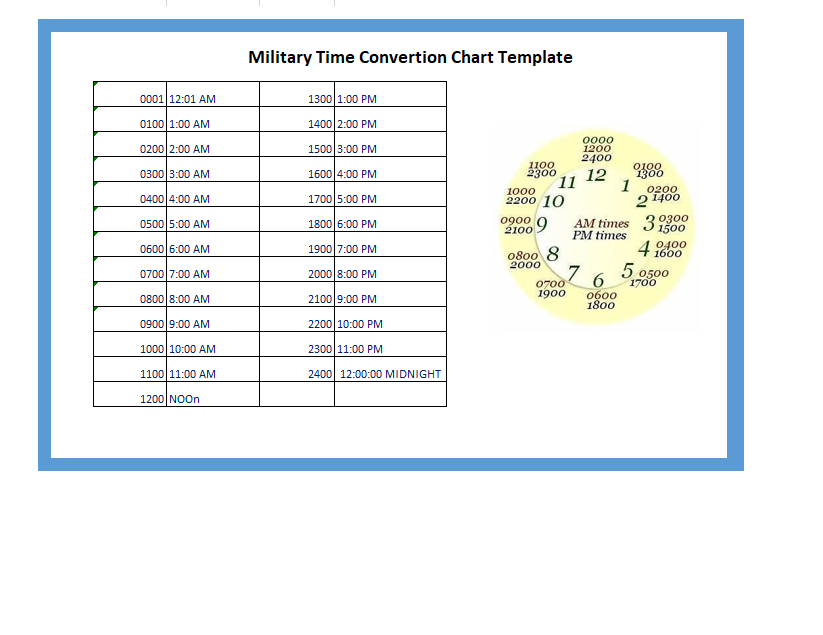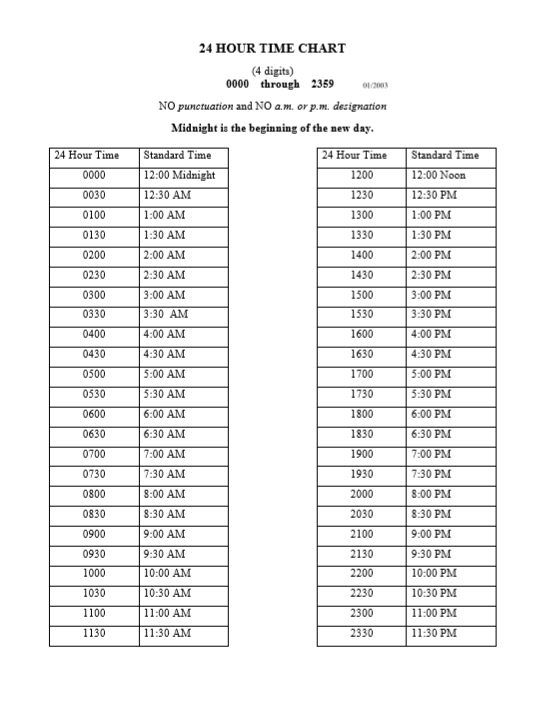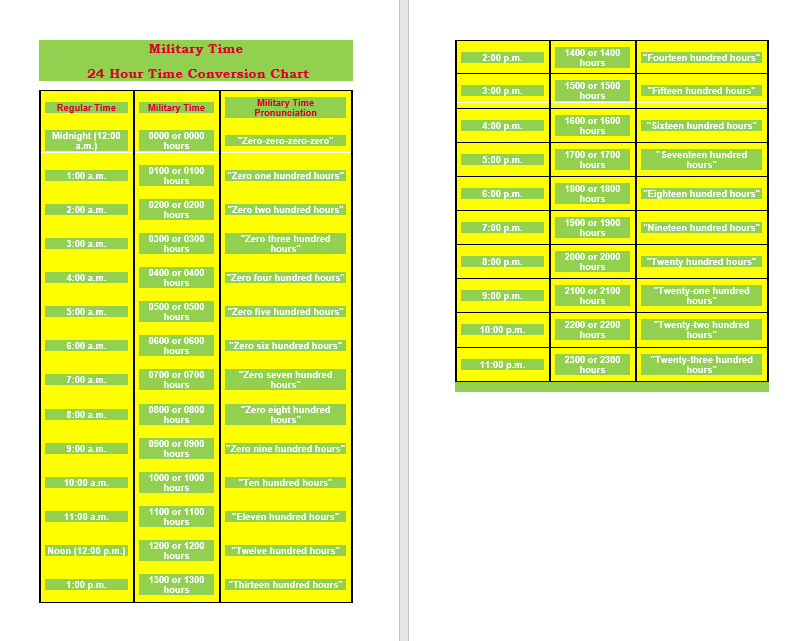Military time chart, while at first can be confusing to read, it is actually pretty simple. The world knows that there are two ways to see the clock: the 24-hour kind and the 12-hour kind.
While each part of the world’s civilians uses at least one of these two kinds, the same cannot be said about their militaries.
Militaries worldwide use the 24-hour conversion, regardless of whether the general populace uses the 12-hour or 24-hour conversion (one famous example is the US, where the widespread use of the 12-hour conversion while the military uses the 24-hour).
Now, you might be wondering why such a complex time exists. When the general populace uses the 12-hour conversion with the p.m. and a.m. thingy, why did the military not comply with it? Why should another layer of complexity be added to the military world?
Below, you will find all the answers surrounding the 24-hour conversion, its usage in the military world, and how to easily read them if you want to be a showoff in front of your folks and friends.
The 24-hour conversion: where does it start?
You might not know it, but the Egyptians are to thank for the 24-hour clock. Ancient Egyptians used a method called constellation tracking to track the hours and days.
In this constellation tracking, they tracked how long it would take for a constellation to move through the sky. This method not only introduced the 24-hour conversion, but it also introduced the system of 360 days a year.
But you are not here to learn about the 360 days, right? You are here because you want to know what happened back then when the Egyptians started counting the hours.
The Egyptians back then introduced temporal hour counting, and in that temporal hour counting, they separated the night and the day in a way that each of them got equal hours.
However, people back then still thought that every season had its own designated hours: in the winter, the night is longer because the sky is dark all the time, and vice versa.
To counter that kind of thinking, a Greek named Hipparchus introduced the concept of equinoctial hours. In equinoctial hours, the day and the night last for the same amount of time regardless of the season.
Equinoxtial hours were not widely popular back then because the concept was confusing to everyday folk, but astronomers have used them ever since their inception.
The ordinary folks’ ignorance lasted for a few years before they finally accepted the fact that equinoctial hours are the easiest method of tracking time.
In what countries or places do they use the 24-hour conversion?
Today, the 24-hour conversion is used almost everywhere, but some countries still need clarification.
- The United States of America and its parent country, Great Britain, use the 12-hour conversion.
- Canada is unique in that some parts of the country use the 12 hours while others use the 24 hours.
- The English-speaking parts of Canada often use the 12 hours, supposedly because of their proximity to the USA.
All of the militaries in those countries use the 24-hour conversion, though. Hospital staff and explorers also use it.
24 Hour Military Time Chart
This chart helps you convert between 24-hour military time and 12-hour civilian time:
| 24-Hour Time | 12-Hour Time |
|---|---|
| 0000 | 12:00 AM |
| 0100 | 1:00 AM |
| 0200 | 2:00 AM |
| 0300 | 3:00 AM |
| 0400 | 4:00 AM |
| 0500 | 5:00 AM |
| 0600 | 6:00 AM |
| 0700 | 7:00 AM |
| 0800 | 8:00 AM |
| 0900 | 9:00 AM |
| 1000 | 10:00 AM |
| 1100 | 11:00 AM |
| 1200 | 12:00 PM |
| 1300 | 1:00 PM |
| 1400 | 2:00 PM |
| 1500 | 3:00 PM |
| 1600 | 4:00 PM |
| 1700 | 5:00 PM |
| 1800 | 6:00 PM |
| 1900 | 7:00 PM |
| 2000 | 8:00 PM |
| 2100 | 9:00 PM |
| 2200 | 10:00 PM |
| 2300 | 11:00 PM |
Why do the people above use the 24-hour conversion?
First thing, it is simple.
All three professions mentioned before involve a degree of ‘tension’ in them that cannot be added by the fact that they need to understand what 07:00 means. With a 24-hour conversion, they will know that saying 07:00 means 7 AM while 19:00 means 7 PM.
Second, they are generally used in jobs that require punctuality.
In the military, you need to be punctual in case of an emergency invasion. In the hospital, you need to be even more punctual because if you are too late, there is a chance that a life will be lost. 24-hour conversion really helps with punctuality because – as it has been said – it is simpler to read and understand.
The third reason is for the military only.
Militaries, as you might have noticed, do not operate solely in their homes. Some got sent to other countries, and some might undergo an undercover mission in which time is everything. Not only using the 24-hour conversion will help the military adapt to the time they are in, but it also cuts time confusion altogether.
Now, let us talk about the military time chart.
The military time chart employs a degree of the 24-hour time but with its modifications and tweaks. This is not a norm as much as a written regulation, but militaries and punctuality are very close to each other. They are so close that a single mistake in the second or minute department could compromise an entire operation.
While it might look complex at first, military time chart conversion is actually a very easy thing to do. To know about them, though, you need to understand the peculiarities found in military time chart templates. Here are those peculiarities:
- 24:00 or 00:00. Both are acceptable ways of saying midnight. Some folks call it 24:00, but many machines will mention it as 00:00. The common usage depends on whether the folks mentioning it (24:00 or 00:00) use digital watches or not.
- Military folks say and write 00:00 as 0000. No matter if it is 7 or 12, military folks will say that this is either 0700 (o seven hundred) or 1200 (twelve hundred), respectively. They will also skip the colon when they are writing the time stamp.
- In some cases, the time can go to 2500. The reasoning behind this is simple: when an operation requires military personnel to stay for an extended period (say from 7 PM to 1 AM), it is definitely more intuitive to say that they are operating from 1900 to 2500.
Because we are not going to list all of the times in the military chart, you can try to find the military time chart printable on the internet. You are bound to find an easy-to-read military time chart, and you can learn about it on your own.
Military Time
Military Time Chart
Military Time Conversion Table
Military Time Converter
Military Time Convertion
Military Time Chart Conversion Chart
Military Time Chart Conversion Chart Pdf
Military Time Convertion Chart Template
24 Hour Military Time Chart Printable
24 Hour Military Time Conversion Chart Template
Benefits of using military time in military operations
There are several benefits to using military time in military operations, including:
Avoiding confusion
Military time helps to avoid confusion and misunderstanding, particularly in high-stress situations where clear communication is critical.
By using a standardised timekeeping system, military personnel can more easily coordinate operations and ensure that everyone is on the same page.
Eliminating ambiguity
Military time eliminates the need to specify whether a time is AM or PM, which can be especially useful in situations where AM and PM might be unclear, such as when communicating across time zones.
Ensuring precision
The use of military time allows for more precise communication of time. In standard time, there are only 12 hours in a day, which means that there can be multiple instances of the same hour in a day.
In military time, each hour is designated by a unique combination of digits, eliminating any ambiguity and ensuring that everyone is clear on exactly what time is being referred to.
Streamlining operations
A standardised timekeeping system can streamline and improve military operations. Military personnel can more easily coordinate their actions and ensure that everyone is working towards the same goals.
Use of Military Time in Other Fields
Military time is also commonly used in other fields, such as aviation, medicine, and public safety, in addition to the military.
In aviation
military time is often used to avoid confusion and ensure precision when communicating flight times and other important information.
By using military time, pilots and air traffic controllers can more easily coordinate their actions and ensure that everyone is clear on exactly what time is being referred to.
In medicine
military time is often used in hospitals and other healthcare settings to avoid confusion and ensure that patients receive the correct treatments at the right times.
By using a standardised timekeeping system, medical professionals can more easily coordinate their actions and ensure that patients receive the best possible care.
In public safety
military time is commonly used by emergency responders and other public safety personnel to avoid confusion and ensure that everyone is working towards the same goals.
By using military time, emergency responders can more easily coordinate their actions and respond to emergencies more effectively.
Commonly used times in military time and how they would be written
In military time, the day is divided into 24 hours rather than the 12-hour system used in standard time.
Each hour is designated by a unique combination of digits, with the first two digits representing the hour and the last two representing the minutes.
For example, 1:00 PM would be written as 1300 hours and 11:45 PM would be written as 2345 hours.
Some commonly used times in military time and how they would be written include:
- 8:00 AM: 0800 hours
- 12:00 PM: 1200 hours
- 6:00 PM: 1800 hours
- 10:00 PM: 2200 hours
In scheduling and other situations, military time can be helpful in avoiding confusion and ensuring that everyone is clear on exactly what time is being referred to.
For example, if a meeting is scheduled for 1:00 PM, it could be written as 1300 hours in military time. This eliminates any ambiguity and ensures that everyone is clear on when the meeting is taking place.
In military operations, military time is essential for coordinating actions and ensuring that everyone is on the same page.
For example, a military operation might be scheduled to begin at 0500 hours, which would be written as 5:00 AM in standard time. By using military time, everyone involved in the operation can be clear on exactly when it is supposed to begin.
How Does the 24-Hour Clock Differ from the Standard 12-Hour Clock?
When we talk about telling time, there are two main ways to do it: the 24-hour clock and the 12-hour clock. Each one shows the time of day in a slightly different way.
Format Differences
The 24-hour clock starts at 00:00, which is midnight, and counts all the way to 23:59 before it hits midnight again. There’s no AM or PM. This is why it’s called “military time” in some places because it’s clear, and there’s no mix-up about morning or evening.
For example, in the 24-hour clock, 3 PM is 15:00. It just keeps counting until 24:00, which is the same as 00:00 the next day.
The 12-hour clock starts at midnight and goes to 11:59 AM, then starts over again at noon and counts to 11:59 PM. This clock uses AM to show morning times and PM to show afternoon and night times.
Why Use the 24-Hour Clock?
The 24-hour clock is great because it’s very clear. There’s no need to wonder if 7:00 means morning or night—it’s just 07:00 for morning and 19:00 for night. This makes it really helpful for people like doctors, soldiers, and pilots who need to be super sure about the time when they work.
Challenges with the 12-Hour Clock
The 12-hour clock can sometimes need to be clarified. If someone says to meet at 8:00, you might need to ask if that’s in the morning or at night. Also, when setting alarms or timers, you have to be careful to set AM or PM correctly, or you might wake up too early or too late!
Learning to Use the 24-Hour Clock
At first, it might feel a little strange to use the 24-hour clock if you’ve always used the 12-hour one. But once you get used to it, it’s easy! And you won’t have to guess about the time of day anymore.
The 24-hour clock is a simple way to tell time that keeps everything clear and avoids any mix-ups about when something is supposed to happen. That’s why many people around the world and in different jobs find it really useful.
Challenges with Switching to Military Time
Here are some common challenges people might face when they start using military time and tips on how to make the transition easier.
Getting Used to the Format
One of the biggest hurdles is simply getting used to reading the time differently. In the 24-hour clock, the day runs from 00:00 (midnight) to 23:59 (one minute before the next midnight).
This means that instead of switching to PM afternoon, the hours just keep going up. For example, 2:00 PM is 14:00 in military time. It can take a little while to stop and think about what time it is in the 24-hour format.
Mental Calculations
Another challenge is doing the mental math needed to convert times, especially in the afternoon and evening hours.
Subtracting 12 to find the PM time can be confusing. For instance, if you see 16:00, you have to remember to subtract 12 to understand that it’s 4:00 PM. This gets easier with practice, but initially, it can be a mental workout.
Social and Professional Adjustments
If you’re switching to military time while most people around you use the 12-hour clock, it can lead to misunderstandings.
For example, if you tell a friend to meet you at 18:00, they might need clarification unless they’re also familiar with the 24-hour clock.
Tips for Easier Transition
- Use Tools: Tools like the “24-Hour Military Time Chart Printable” can be very helpful. Keep one on your desk or fridge and refer to it until you get the hang of the new format.
- Practice Regularly: The more you use military time in your daily life, the easier it will become. To get more practice, try setting your phone or computer clock to the 24-hour format.
- Communicate Clearly: When making plans with others, clarify the time format you’re using. For example, “Let’s meet at 18:00, which is 6:00 PM,” to avoid any confusion.
While there are some challenges to switching to military time, with a bit of practice and patience, it becomes just as easy to use as the 12-hour clock.
In conclusion, the 24-hour clock is a system of timekeeping used by the military and other organisations to avoid confusion and ensure efficiency.
It is based on a 24-hour clock, with each hour designated by a unique combination of digits. Using It helps to avoid confusion and misunderstanding, particularly in high-stress situations where clear communication is critical.
It is commonly used in the military, aviation, medicine, and public safety, among other fields. It is helpful in avoiding confusion and ensuring precision in scheduling and other situations. Additionally, it can help streamline operations and improve coordination.
It is a valuable and essential tool for avoiding confusion and ensuring precision in various situations. It is recommended that it be used in relevant situations to avoid confusion and ensure that everyone is clear on exactly what time is being referred to.

The content creator team at calipsotree.com is dedicated to making topics accessible to everyone, with over 9 years of experience in writing and breaking down complex concepts into easy-to-understand articles that answer readers’ financial questions.






